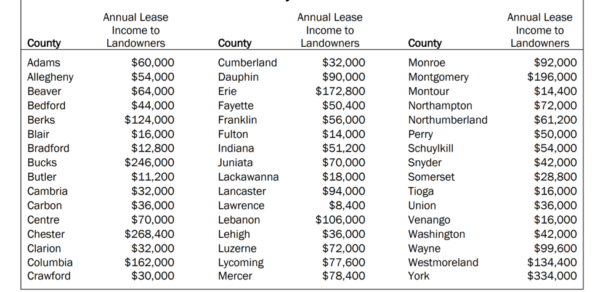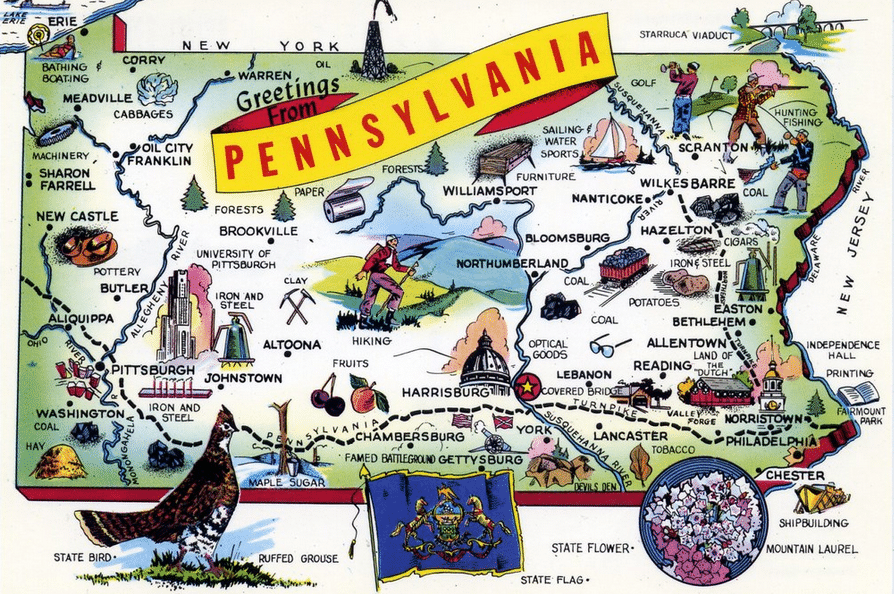Pennsylvania is at a crossroads. The state still mines coal, albeit much less than in the past. And, there’s plenty of fracked natural gas being pumped, but the land rush is gone.
Now, solar developers represent the opportunity knocking at the door with billions of dollars in financial benefits via land lease agreements, construction employment, hardware sales, engineering support, many peripheral jobs — and the research to back the potential solar boom.
Developers anticipate a pair of key Pennsylvania solar programs – Pennsylvania HB531 and SB705 – to be implemented in some manner, sometime “soon.” Anecdotal evidence shows many national solar development companies are now hiring in the state.
What’s more, analysis by the College of Agricultural Studies at Penn State University found that around 1 GW of solar power — on just over 4,000 acres of land — was ready to break ground, pending the approval of those two bills. The anticipated projects already have signed agreements, and have some sort of interconnection and permitting in place.
Multiple revenue streams would go to local firms and landowners from this construction.

Using lease rates of $700 to $1,000 per acre, the Penn State researchers found that landowners would gain $2.9 to $4.2 million a year for 25 to 35 years. There would be a roughly one-off $1.8 billion economic benefit from construction costs flowing to the region’s laborers, engineers, and hardware distributors. Ongoing O&M benefits of $83 million a year would flow to electricians and land management. And, there’d be almost $100 million in general power grid savings spread among all ratepayers.
Lobbyists, researchers, and other groups have variously suggested 6 GW, 7.5 GWac, and 11 GW of solar power through 2030 as potential goals. A total of 11 GW of solar would mean around $1.1 billion in land lease payments alone on 45,000 acres spread over 30 years.

However, the percentage of the state’s electricity from solar power is still small, on the order of 0.31% based on 664 MWdc of total installed capacity. Some might argue that means solar is ripe for opportunity with wide open power lines and substations.
Last year, solar developer Prospect14 (at the time known as Glidepath) said it had sold about as much capacity — 1 GW — in a development deal as the Penn State study covered, and more than is presently installed in Pennsylvania. That offers possible evidence that Pennsylvania solar is positioned for a breakout.
A recent utility integrated resource plan covering half the state seeks roughly 90 MW a year of solar. That bit of evidence, along with the Prospect14 deal and other larger buyer success, suggests that projects at scale can pencil financially with a combination of Renewable Energy Certificates, plus wholesales electricity rates.
If the laws that are being considered move forward, then smaller-sized solar projects soon will be able to sell their electricity into the Pennsylvania market.
John Fitzgerald Weaver is a solar power professional, known digitally as the ‘Commercial Solar Guy.’ His company has a construction license in Massachusetts, and directly manages projects in MA & RI. He may be reached at commercialsolarguy@gmail.com.
Editor’s note: Updated February 22 to reflect the name change of Glidepath Ventures to Prospect14.
This content is protected by copyright and may not be reused. If you want to cooperate with us and would like to reuse some of our content, please contact: editors@pv-magazine.com.








By submitting this form you agree to pv magazine using your data for the purposes of publishing your comment.
Your personal data will only be disclosed or otherwise transmitted to third parties for the purposes of spam filtering or if this is necessary for technical maintenance of the website. Any other transfer to third parties will not take place unless this is justified on the basis of applicable data protection regulations or if pv magazine is legally obliged to do so.
You may revoke this consent at any time with effect for the future, in which case your personal data will be deleted immediately. Otherwise, your data will be deleted if pv magazine has processed your request or the purpose of data storage is fulfilled.
Further information on data privacy can be found in our Data Protection Policy.